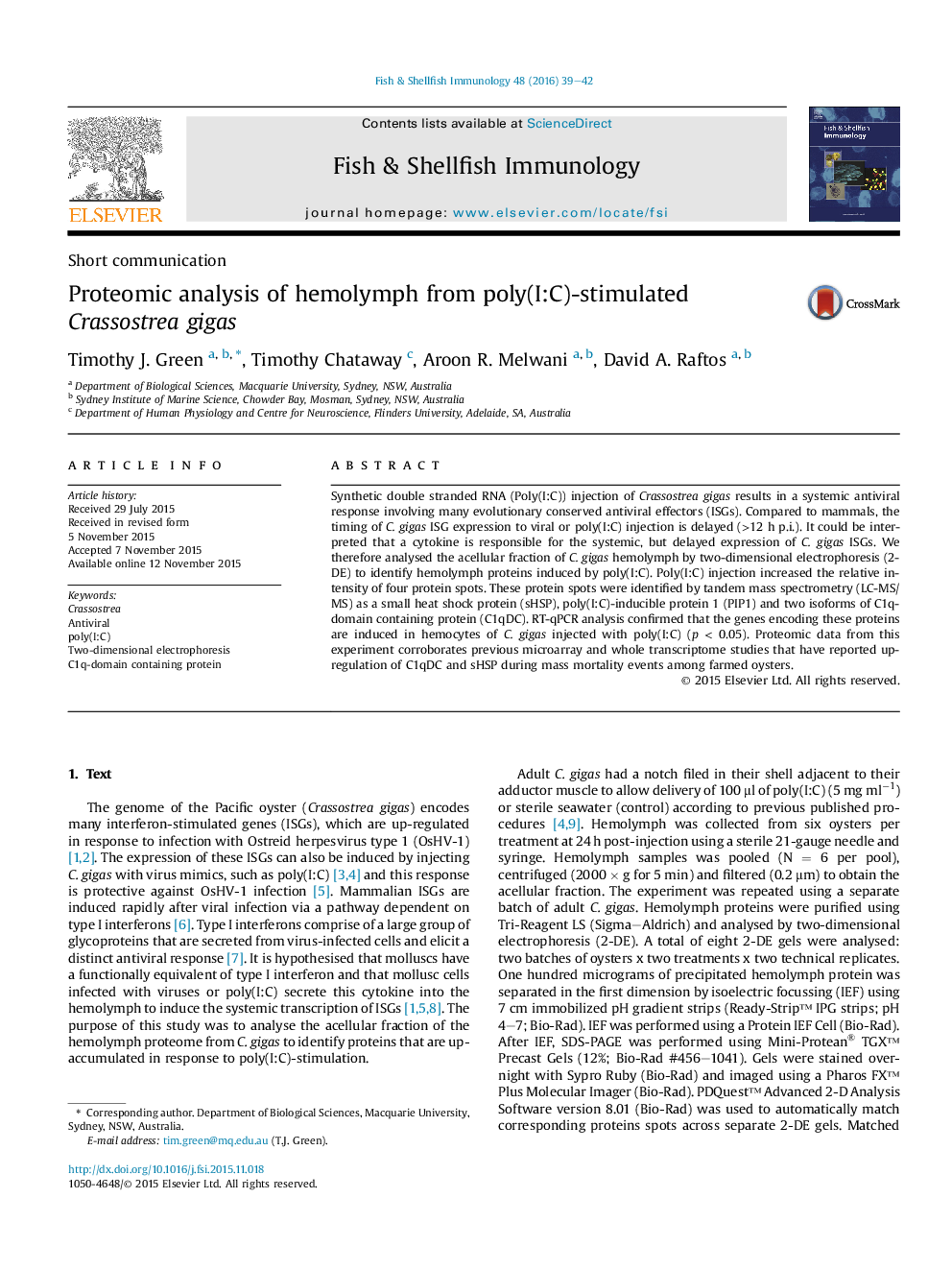| Article ID | Journal | Published Year | Pages | File Type |
|---|---|---|---|---|
| 2430905 | Fish & Shellfish Immunology | 2016 | 4 Pages |
•The acellular fraction of hemolymph from poly(I:C) stimulated oysters was analysed by 2D electrophoresis and tandem mass spectrometry.•Poly(I:C) stimulation increased the relative intensity of four protein spots, including one unique protein spot.•Mass spectrometric analysis showed that the poly(I:C) induced proteins include C1q-like protein (C1qDC) and a heat shock protein (sHSP).•Proteins induced by poly(I:C) correspond to genes identified in microarray studies investigating mortality events of farmed oysters.
Synthetic double stranded RNA (Poly(I:C)) injection of Crassostrea gigas results in a systemic antiviral response involving many evolutionary conserved antiviral effectors (ISGs). Compared to mammals, the timing of C. gigas ISG expression to viral or poly(I:C) injection is delayed (>12 h p.i.). It could be interpreted that a cytokine is responsible for the systemic, but delayed expression of C. gigas ISGs. We therefore analysed the acellular fraction of C. gigas hemolymph by two-dimensional electrophoresis (2-DE) to identify hemolymph proteins induced by poly(I:C). Poly(I:C) injection increased the relative intensity of four protein spots. These protein spots were identified by tandem mass spectrometry (LC-MS/MS) as a small heat shock protein (sHSP), poly(I:C)-inducible protein 1 (PIP1) and two isoforms of C1q-domain containing protein (C1qDC). RT-qPCR analysis confirmed that the genes encoding these proteins are induced in hemocytes of C. gigas injected with poly(I:C) (p < 0.05). Proteomic data from this experiment corroborates previous microarray and whole transcriptome studies that have reported up-regulation of C1qDC and sHSP during mass mortality events among farmed oysters.
